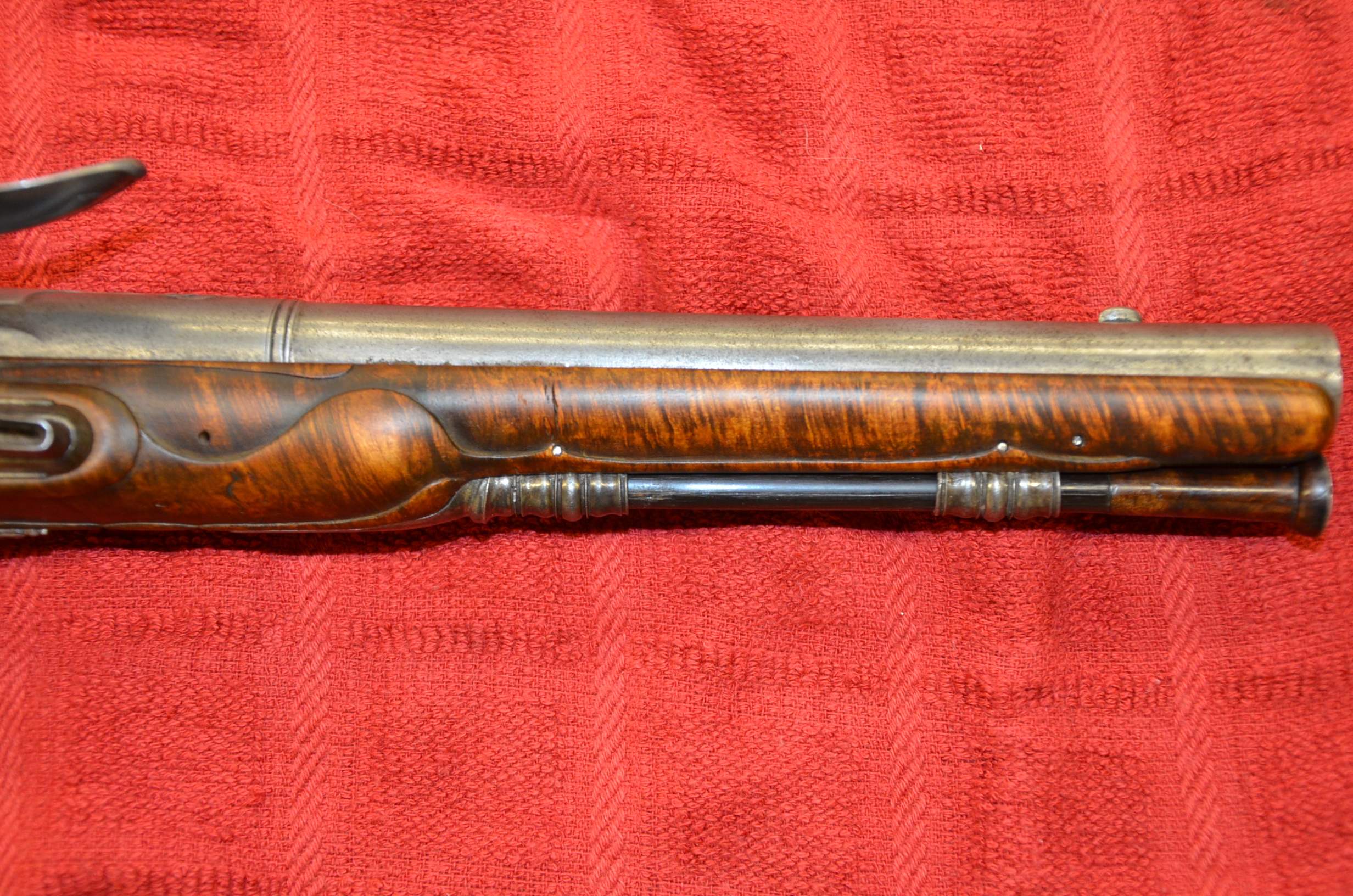Lincolnsreg
32 Cal
- Joined
- Jun 22, 2020
- Messages
- 16
- Reaction score
- 1
Hello all,
I'm a newbie to the forum. I'm looking for help identifying lock marks on a late 17th century flintlock holster pistol.
It has been in my possession for some years, and now I have time to research more, I'd be interested in what you all think. The barrel has London proof marks (without cartouche). The lock has no outer markings (and therefore possibly for civilian market), but inside there is a crown over 'I' and and IH. I have always presumed the I to mean James II (I found this in a book many years ago). I was interested as to who IH might be. My best guess is John Hawkins, who was active in the 1680s but his later barrel marks are a crown over IH.
As much as I would like Blackmore's Dictionary of London gunmakers, it is a tad expensive.
Note: the stock, thimble and ramrod are replacements (original battered stock still in possession).
Any thoughts or suggestions gratefully received.
Thanks





I'm a newbie to the forum. I'm looking for help identifying lock marks on a late 17th century flintlock holster pistol.
It has been in my possession for some years, and now I have time to research more, I'd be interested in what you all think. The barrel has London proof marks (without cartouche). The lock has no outer markings (and therefore possibly for civilian market), but inside there is a crown over 'I' and and IH. I have always presumed the I to mean James II (I found this in a book many years ago). I was interested as to who IH might be. My best guess is John Hawkins, who was active in the 1680s but his later barrel marks are a crown over IH.
As much as I would like Blackmore's Dictionary of London gunmakers, it is a tad expensive.
Note: the stock, thimble and ramrod are replacements (original battered stock still in possession).
Any thoughts or suggestions gratefully received.
Thanks













